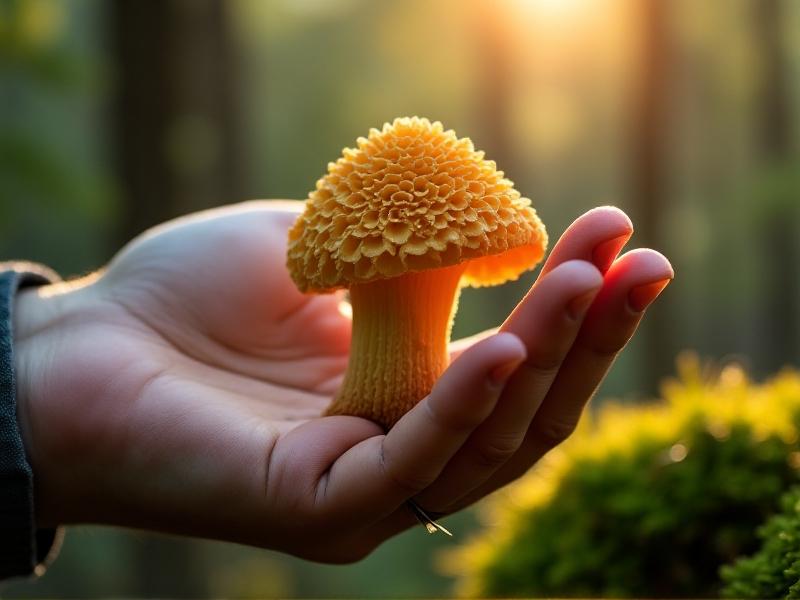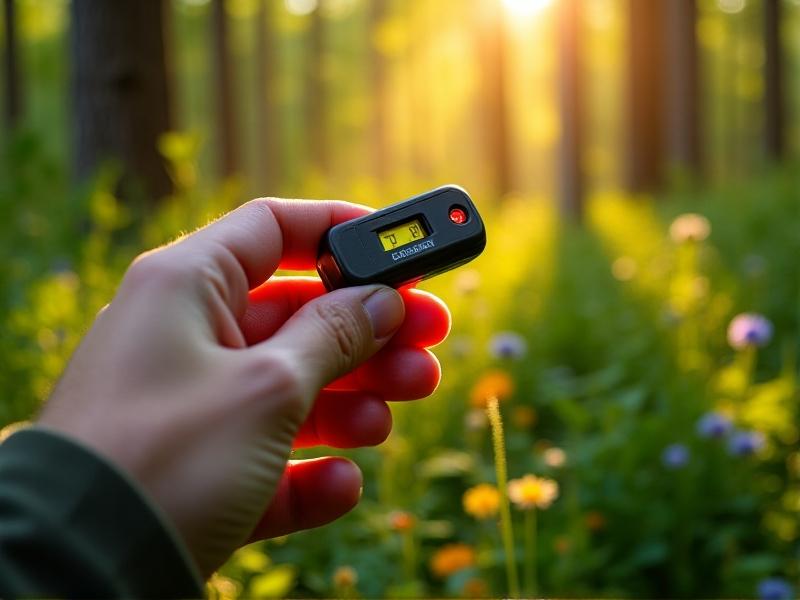Certifying Foraged Ingredients: Meeting Health Department Requirements
Understanding the Basics of Foraged Ingredients
Foraging has become a popular practice among chefs, food enthusiasts, and sustainability advocates. The act of gathering wild plants, mushrooms, and other edible items from nature offers a unique connection to the environment and a way to source fresh, local ingredients. However, incorporating foraged ingredients into commercial food production comes with significant responsibilities, particularly when it comes to meeting health department requirements. Understanding the basics of foraged ingredients is the first step toward ensuring safety and compliance.
Foraged ingredients are inherently diverse, ranging from wild berries and herbs to mushrooms and seaweed. Each type of ingredient carries its own set of risks and considerations. For example, certain mushrooms can be toxic if misidentified, while some plants may absorb contaminants from their environment. This variability makes it essential to have a thorough understanding of the species being foraged, their habitats, and potential hazards.
Health departments prioritize public safety, and their regulations are designed to minimize risks associated with foodborne illnesses and contamination. Foragers and businesses must be aware of these regulations and take proactive steps to ensure their practices align with legal standards. This includes proper identification, safe handling, and documentation of foraged items.

Identifying Safe and Edible Species
One of the most critical aspects of foraging is accurately identifying safe and edible species. Misidentification can lead to serious health risks, including poisoning. Foragers must invest time in learning about the plants and fungi in their region, using reliable resources such as field guides, workshops, or mentorship from experienced foragers.
Key identification features include the shape, color, texture, and growth patterns of the species. For example, edible mushrooms like morels have distinct honeycomb-like caps, while toxic look-alikes may have smooth or differently shaped caps. Similarly, plants like wild garlic can be identified by their pungent smell and long, slender leaves.
It’s also important to consider the environment in which the species grows. Some plants may absorb heavy metals or pesticides from polluted soil, making them unsafe for consumption. Foragers should avoid areas near industrial sites, roadsides, or agricultural fields where chemical contamination is likely.
Documenting the identification process is crucial for meeting health department requirements. This may include taking photographs, recording the location and date of harvest, and noting any distinguishing characteristics. Such documentation not only ensures compliance but also provides a reference for future foraging endeavors.

Navigating Health Department Regulations
Health department regulations vary by region, but they generally focus on ensuring the safety and traceability of foraged ingredients. These regulations may include requirements for permits, labeling, and inspections. Understanding and complying with these rules is essential for businesses that incorporate foraged items into their products.
Permits are often required for commercial foraging activities. These permits may specify the types of species that can be harvested, the locations where foraging is allowed, and the quantities that can be collected. Foragers must ensure they have the appropriate permits and adhere to the terms outlined by the health department.
Labeling is another important aspect of compliance. Foraged ingredients must be accurately labeled with information such as the species name, harvest location, and date. This transparency allows health inspectors to verify the safety and origin of the ingredients, providing accountability throughout the supply chain.
Inspections may be conducted to ensure that foraged items are handled and stored properly. This includes maintaining clean workspaces, using appropriate containers, and preventing cross-contamination. Businesses should be prepared for these inspections by keeping detailed records and following best practices for food safety.

Implementing Best Practices for Foraging
To meet health department requirements and ensure the safety of foraged ingredients, it’s essential to implement best practices throughout the foraging process. These practices encompass everything from preparation and harvesting to storage and transportation.
Preparation begins with education. Foragers should familiarize themselves with the local flora and fauna, as well as any specific regulations that apply to their area. Equipping themselves with the right tools, such as field guides, baskets, and gloves, can also enhance safety and efficiency.
During harvesting, foragers should practice sustainable methods to minimize environmental impact. This includes only taking what is needed, avoiding damage to the surrounding ecosystem, and leaving rare or endangered species untouched. Proper harvesting techniques, such as cutting plants at the base rather than uprooting them, can also promote regrowth.
Storage and transportation are critical to maintaining the quality and safety of foraged ingredients. Items should be kept in breathable containers to prevent moisture buildup, which can lead to spoilage. Temperature control is also important, especially for perishable items like mushrooms and berries.
By adhering to these best practices, foragers can ensure that their ingredients are safe, sustainable, and compliant with health department standards. This not only protects public health but also supports the long-term viability of foraging as a practice.
Building Relationships with Health Inspectors
Building a positive relationship with health inspectors can be invaluable for businesses that use foraged ingredients. Inspectors are not just enforcers of regulations; they are also resources for guidance and support. Establishing open communication and demonstrating a commitment to safety can foster trust and collaboration.
One way to build this relationship is by proactively seeking feedback from inspectors. Inviting them to review your foraging and handling processes can provide insights into areas for improvement. This proactive approach shows that you are serious about compliance and willing to go the extra mile to ensure safety.
Transparency is key when working with health inspectors. Providing detailed records of your foraging activities, including species identification, harvest locations, and handling procedures, can help inspectors understand your practices and verify compliance. Clear and accurate documentation also reduces the likelihood of misunderstandings or disputes.
Finally, staying informed about changes in regulations and industry standards is essential. Health department requirements may evolve over time, and businesses must adapt to remain compliant. Attending workshops, joining industry associations, and networking with other foragers can help you stay up to date and maintain a strong relationship with health inspectors.
Educating Staff and Consumers
Education plays a vital role in ensuring the safe and responsible use of foraged ingredients. Both staff and consumers need to understand the importance of proper identification, handling, and compliance with health department regulations. Providing this education can enhance safety, build trust, and promote the value of foraged ingredients.
For staff, training should cover the basics of foraging, including species identification, sustainable harvesting practices, and food safety protocols. Hands-on workshops and field trips can be particularly effective in reinforcing these skills. Staff should also be familiar with the health department requirements and the steps needed to maintain compliance.
Educating consumers is equally important. Many people are unfamiliar with foraged ingredients and may have concerns about their safety. Businesses can address these concerns by providing clear information about the sourcing and handling of their ingredients. This might include labeling, signage, or educational materials such as brochures or website content.
Sharing the story behind your foraged ingredients can also resonate with consumers. Highlighting the environmental benefits, local connections, and unique flavors of foraged items can create a sense of appreciation and trust. By educating both staff and consumers, businesses can foster a culture of safety, sustainability, and transparency.
Embracing Technology for Compliance and Safety
Technology can be a powerful tool for ensuring compliance and safety when working with foraged ingredients. From digital identification apps to traceability software, there are numerous technological solutions that can streamline processes and enhance accuracy.
Digital identification apps, for example, can help foragers quickly and accurately identify species in the field. These apps often include detailed descriptions, photographs, and even AI-powered image recognition features. While they should not replace traditional identification methods, they can serve as a valuable supplementary tool.
Traceability software is another important resource for businesses. This software allows for detailed tracking of foraged ingredients, from harvest to sale. It can generate reports, manage documentation, and provide a clear audit trail for health inspectors. This level of transparency not only ensures compliance but also builds consumer trust.
Additionally, technology can facilitate communication and collaboration with health inspectors. Online platforms and portals can streamline the submission of documents, scheduling of inspections, and sharing of updates. Embracing these technological solutions can make the process of meeting health department requirements more efficient and effective.








